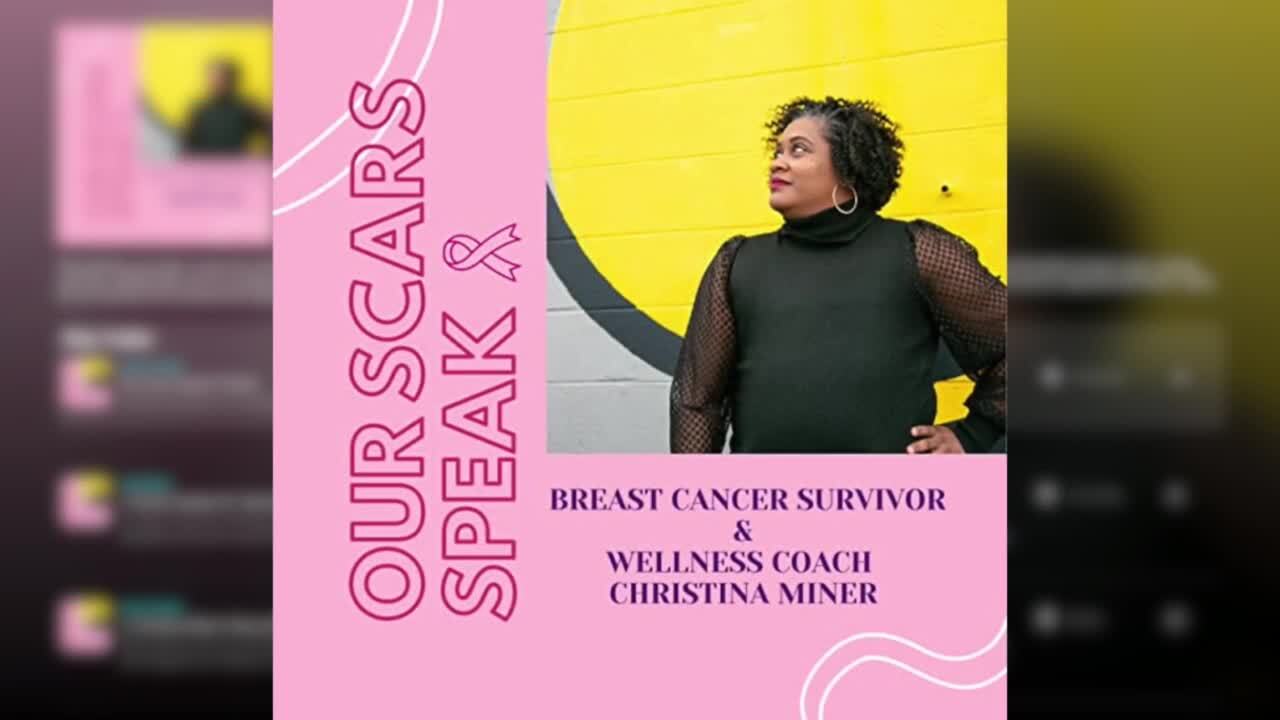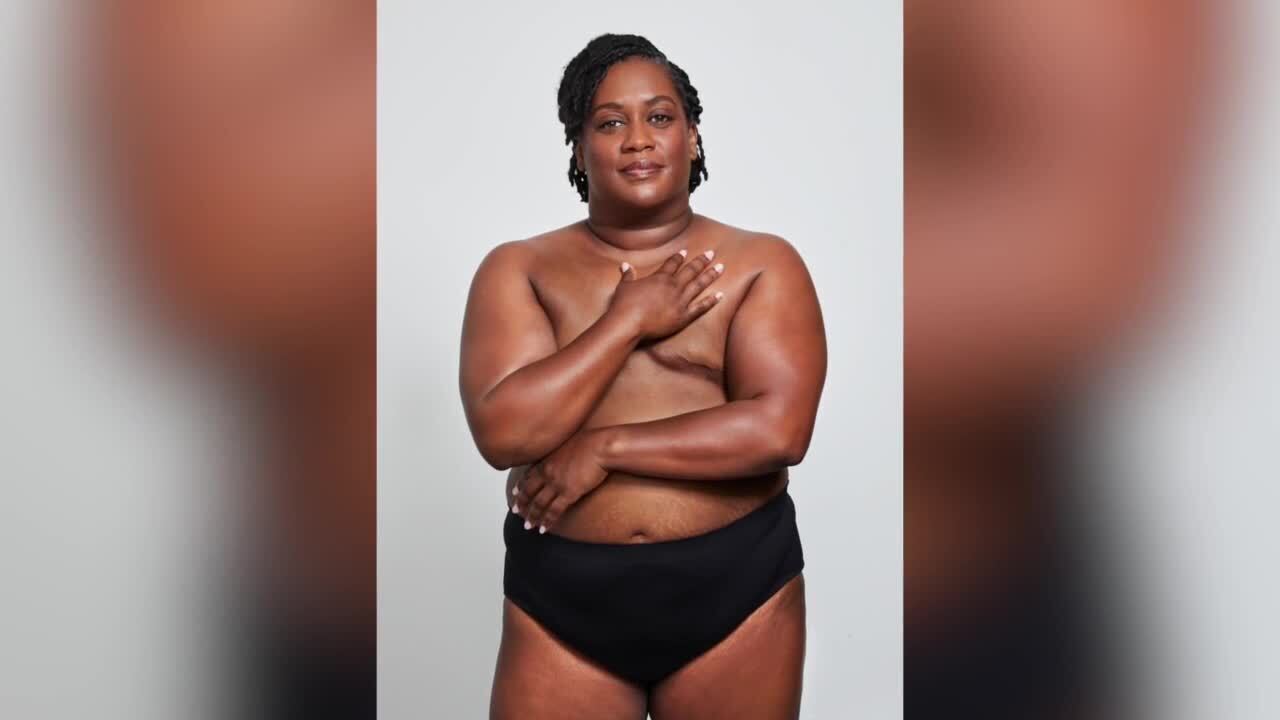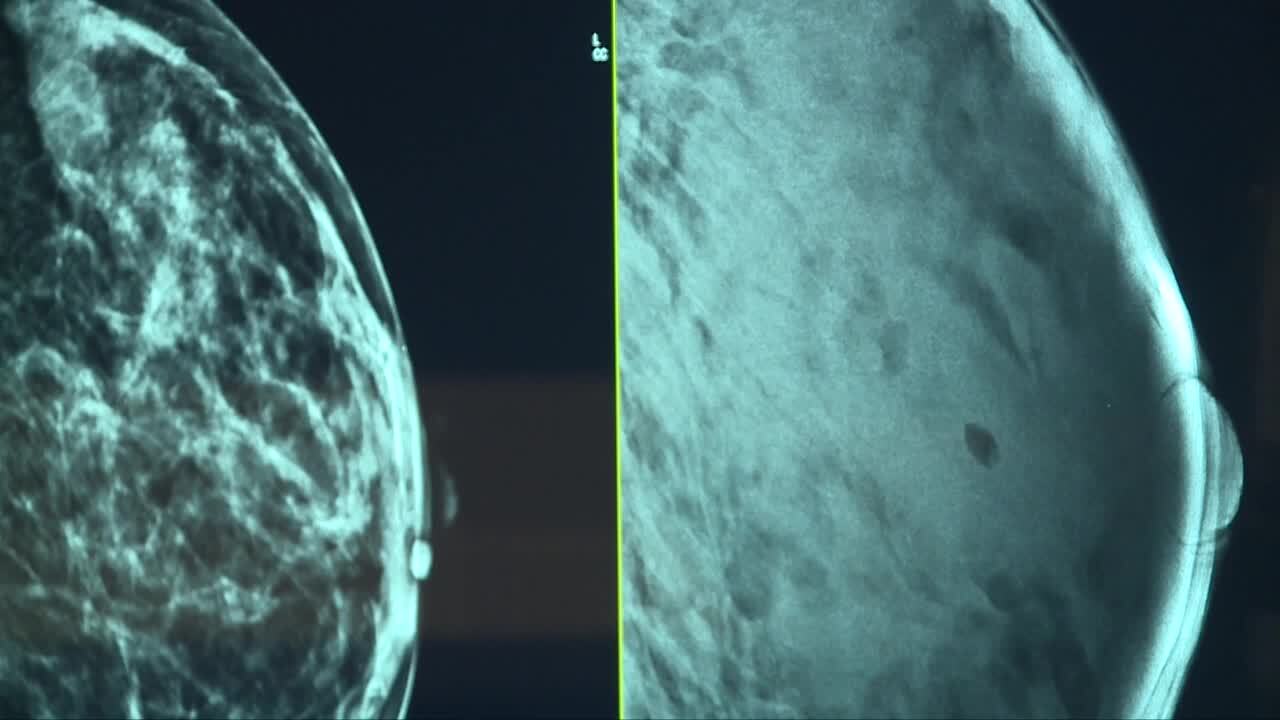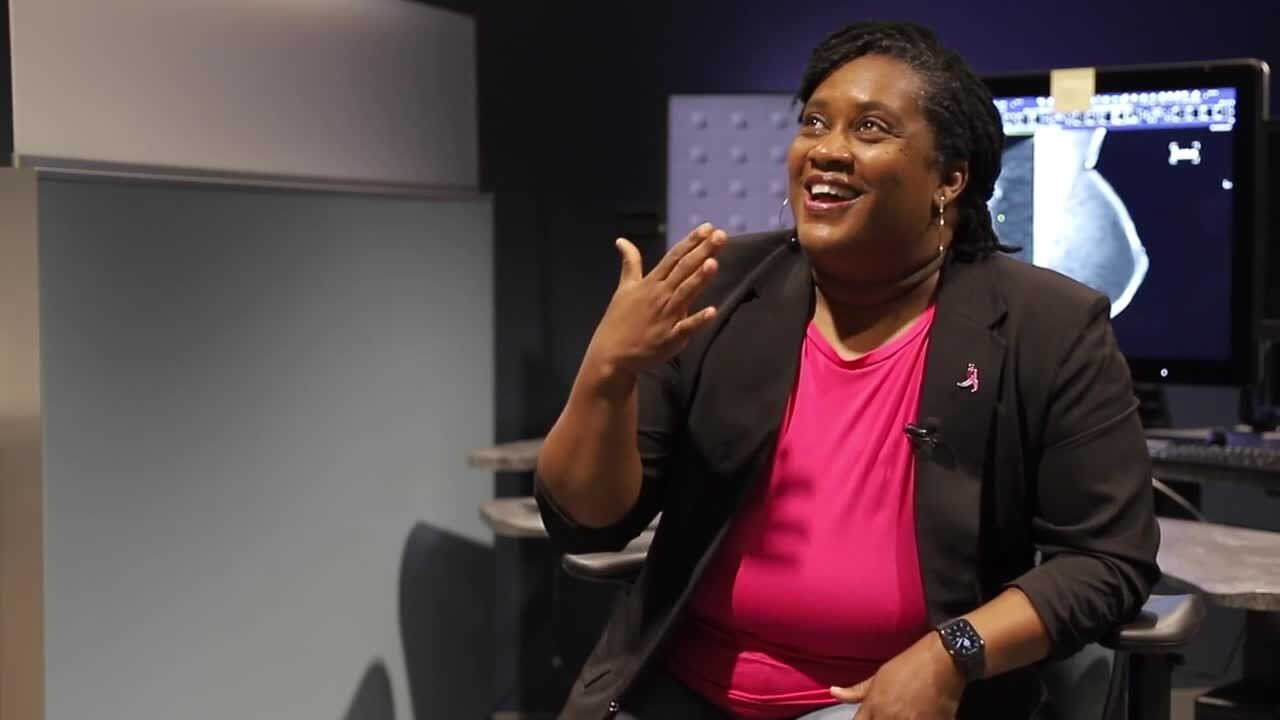RICHMOND, Va. — From gracing the "Here For The Girls" calendar as Miss January, to bearing her scars to the world, Christina Miner has a story to tell.
“I was looking at my scars. I'm going to start crying. I was looking at my scars and they speak," Miner said.
In her newly-launched podcast, “Our Scars Speak," the breast cancer survivor talks about her cancer journey — before, during and now.

“It has changed my life to be very confident to share my story wherever I go to help other women and even men who have breast cancer,” Miner said.
Miner was diagnosed with breast cancer in 2019 at the age of 44.
“I had so much pain. So, I leaned over and cuffed my hand under my breast and a lump sat right in my hand. It was that big,” Miner said.

However, she admits her breast pain started years before her diagnosis. She was in her 20s while breastfeeding her child. It was the first time a doctor would tell her that she has dense breasts.
“He said it was something to watch for. That was it. That was all the description that I had from it,” Miner said.
The FDA recently released new rules requiring mammogram providers to inform patients about their breast density, their breast cancer risk and additional screening options.
“Initially, I thought 'finally' because the rest of the country is catching up,” Miner said.

Dr. Priti Shah is the medical director of breast imaging at VCU Health. Dr. Shah said before the FDA mandate, Virginia was one of 38 states already requiring patients be informed about their breast density.
Up to 50% of women have dense breast tissue. It’s one factor that increases the risk of breast cancer.
With dense breasts, it's easy for tumors to hide when doctors are looking at mammograms and X-rays.
“That tissue is white on X-ray. The problem with that is it can hide small lumps or masses because those lumps and masses are the same shade of white,” Dr. Shah explained.
If a patient has dense breasts a mammogram — preferably a 3D mammogram — and additional screenings like an ultrasound or MRI would be needed.

“I think it's a great step forward that the FDA is mandating this universal rule to ensure consistency in reporting standards so that patients across the board are empowered with that additional information,” Dr. Shah said.
Miner who is a fierce breast cancer advocate agrees.
“Having that information pretty much put the ball back in the patient's court. Here's all the information I can give you and actually going over the imaging reports with us is very critical for patients to know,” Miner said.

Dr. Shah points out while this is a big step forward for patients with dense breasts, she said more can be done when it comes to medical coverage for those additional screening tests.
Some states do pay for those supplemental screenings, but Virginia is not one of them.

On the 6th of the month, CBS 6 and VCU Massey Cancer Center remind women to contact their buddy to remind them to conduct a monthly breast self-exam. If it is time, you should also schedule an annual clinical breast exam and mammogram, which are key to early detection.



